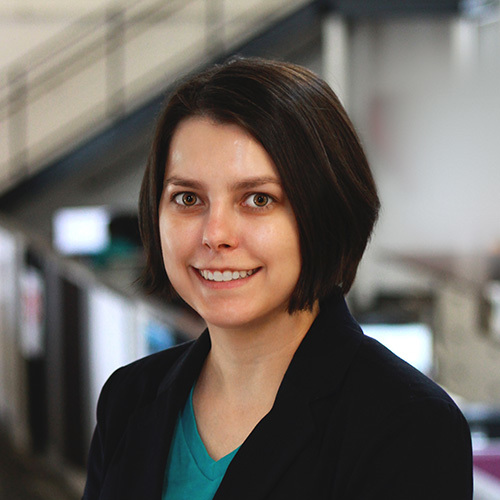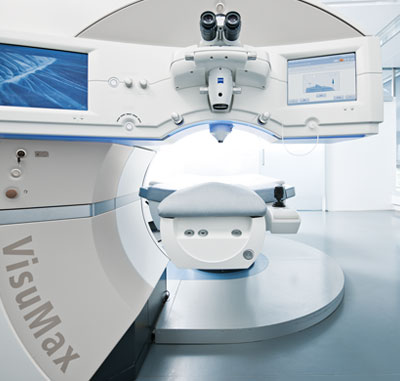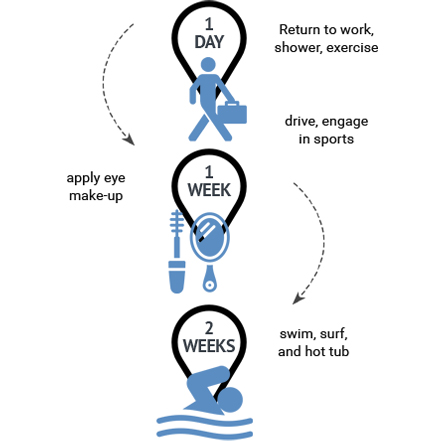“My SMILE procedure with Dr. Hyver was quick and easy, and I love not having to
wear my contact lenses and glasses anymore!”
Bay Area Orthodontist and
SMILE vision patient, Dr. Wendan Li
SMILE is one of the newest forms of laser vision correction, with more than three million SMILE procedures performed worldwide. Just like LASIK and PRK, SMILE is designed to correct your nearsightedness and astigmatism to help free you of your glasses and contact lenses. But compared to these other procedures, SMILE takes a different surgical approach, employing only a single femtosecond laser for your treatment.

“It’s so amazing to wake-up and see clearly, free of my glasses and contact lenses, thanks to Dr Hyver! ”
University Administrator and
SMILE vision patient, Claire Shaw
SMILE is one of the newest forms of laser vision correction, with more than three million SMILE procedures performed worldwide. Just like LASIK and PRK, SMILE is designed to correct your nearsightedness and astigmatism to help free you of your glasses and contact lenses. But compared to these other procedures, SMILE takes a different surgical approach, employing only a single femtosecond laser for your treatment.
“It’s so amazing to wake-up and see clearly, free of my
glasses and contact lenses, thanks to Dr Hyver!”
University Administrator and
SMILE vision patient, Claire Shaw
Dr. Hyver performs SMILE on the ZEISS Visumax femtosecond laser. During the SMILE procedure, Dr. Hyver uses the Visumax to create a small, lens-shaped piece of tissue, called a “lenticule,” within the middle layer of the cornea, after which he extracts this tissue through a small incision in the cornea (thus the SMILE acronym: Small Incision Lenticule Extraction), thereby completing the SMILE procedure.
In creating and removing this precisely-shaped lenticule, Dr. Hyver reshapes your cornea, thereby correcting your vision error. From start to finish, the SMILE procedure takes just a few minutes and is generally painless.
Dr. Hyver performs SMILE on the ZEISS Visumax femtosecond laser. During the SMILE procedure, Dr. Hyver uses the Visumax to create a small, lens-shaped piece of tissue, called a “lenticule,” within the middle layer of the cornea, after which he extracts this tissue through a small incision on the side of the cornea (thus the SMILE acronym: Small Incision Lenticule Extraction), thereby completing the SMILE procedure.
In creating and removing this precisely-shaped lenticule, Dr. Hyver reshapes your cornea, thereby correcting your vision error. From start to finish, the SMILE procedure takes just a few minutes and is generally painless.

SMILE vision correction was first performed in Germany in 2007. The idea was to focus the energy of a femtosecond laser – which emits laser pulses of femtosecond-range duration at very high frequencies – at a predetermined depth in the patient’s cornea to incise the lenticule, leaving the upper layers and surface of the cornea undisturbed, resulting in a less invasive surgical procedure. The ZEISS Visumax femtosecond laser was the first platform cleared by the FDA for SMILE treatment, gaining FDA-approval for the correction of nearsightedness and astigmatism in 2018, shortly after which Dr. Hyver acquired our Visumax laser and began performing SMILE treatment.


During the first four hours after your SMILE procedure, your vision will be hazy (similar to looking through a film), and you’re likely to experience varying degrees of eye stinging, scratchiness, tearing, and light sensitivity.
One day after surgery, aside from a little dryness, your eyes should feel relatively normal, and your vision should be clear enough (80-90% of normal) to resume most of your regular activities. However, results vary from patient-to-patient, based on the patient’s preoperative prescription and on the type of work she or he performs.
Over the next few weeks, your vision should gradually sharpen to reach its best correction.
With today’s state-of-the-art laser infrastructure, combined with Dr. Hyver’s experience and deep surgical database, it’s rare that our SMILE patients don’t see 20/20 or better. Like any medical procedure, however, SMILE is not without risks or alternatives. Learn more about SMILE in our FAQ and about SMILE safety here.
